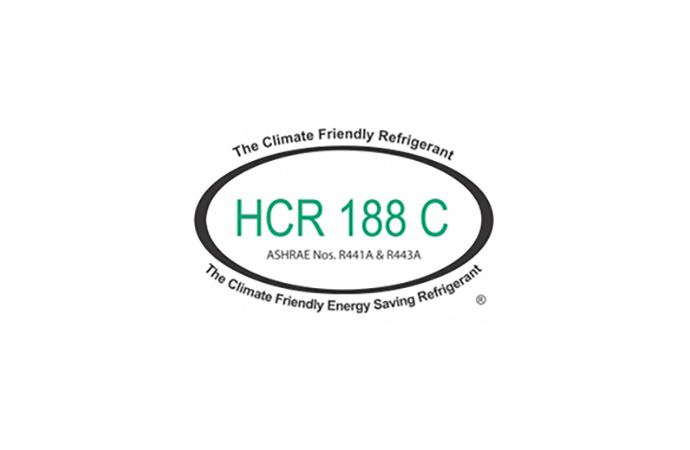A draft ISO safety standard would restrict the maximum allowable refrigerant charge of flammable hydrocarbon refrigerants in several applications as well as tighten ammonia limits, whilst exempting newly developed chemical refrigerants that are also flammable from similar provisions. This could have a worldwide impact on limiting the use of low-GWP natural refrigerants, especially as several countries currently look to international standards to advise their transition away from HCFCs.

Whilst the HVAC&R industry is gearing up for long awaited regulatory developments at both the international and EU level that could change the business outlook for low Global Warming Potential (GWP) natural refrigerants, proposed ISO safety standards could make that transition to low-GWP natural refrigerants all the more challenging:
In the heat of the summer, final draft ISO standard 5149 was communicated to national standardisation committees for voting at the end of September/early October. Titled, ‘Refrigerating systems and heat pumps - Safety and environmental requirements’, the standard consists of the following 4 parts:
HC and ammonia charge limits
The proposed standard represents a step backwards with regards to adopting safety standards that reflect technological progress in safety aspects of natural refrigerant technology. While the natural refrigerant industry has long been calling for revising already restrictive standards that limit maximum allowable charges, the ISO standard would further aggravate the situation:
Impact on EU market
It is safety standard EN 378 that takes precedence in the EU rather than ISO standards. However, EN 378 is currently undergoing revision, while the tendency towards increased international cooperation with respect to standards means that the two standards could become very much aligned in the future.
International Impact
The ISO standard will have an even greater impact at international level, as an increasing number of non-industrialised countries that might not necessarily have national standards and are currently looking at HCFC replacement technologies to fulfil their Montreal Protocol obligations, will be looking to ISO standards to see what technologies to deploy. Naturally, countries would tend to opt for refrigerants with the least restrictions and together with the maximum allowable charges the deployment of natural refrigerants is likely to also be restricted. But what about leap-frogging?
3 October vote outcome & next steps
The first three parts of the standard were disapproved at the vote of 3 October 2012. Part 1 on the “Definitions, classification and selection criteria” in particular received most of the “No” votes, with more than 50% of ISO full-members voting down the draft. Part 4 was approved, though cannot be published without the other parts.
Regarding next steps, this is not so clear yet, with options ranging from cancelling the project to resubmitting a modified draft after addressing comments received by members.
In the heat of the summer, final draft ISO standard 5149 was communicated to national standardisation committees for voting at the end of September/early October. Titled, ‘Refrigerating systems and heat pumps - Safety and environmental requirements’, the standard consists of the following 4 parts:
- Part 1: Definitions, classification and selection criteria
- Part 2: Design, construction, testing, marking and documentation
- Part 3: Installation site
- Part 4: Operation, maintenance, repair and recovery
HC and ammonia charge limits
The proposed standard represents a step backwards with regards to adopting safety standards that reflect technological progress in safety aspects of natural refrigerant technology. While the natural refrigerant industry has long been calling for revising already restrictive standards that limit maximum allowable charges, the ISO standard would further aggravate the situation:
- The maximum amount of hydrocarbons allowed in refrigeration systems that are wholly or partly located in a human occupied space is reduced to 1 kg (compared to 1.5 and 2.5 kg for general and supervised occupancies respectively in EN 378 European safety standard)
- The maximum amount of hydrocarbons that can be used for chillers for AC and certain refrigeration systems is 1 kg (compared to unlimited charge in EN 378)
- The amount of ammonia that can be used in certain occupied spaces (working areas, etc) has been almost halved (compared to EN 378)
- When using certain flammable refrigerant such as R32 or R1234yf (“A2L’s”), new provisions are offered to enable considerably larger charge quantities, provided simple measures are adopted (such as stop-valves and/or ventilation). On the other hand, similar provisions that would allow larger quantities for natural refrigerants such as ammonia or hydrocarbons when such valves are used are not foreseen. Furthermore, the standard encourages the very risky practice of not using safe electrics with these A2L flammable refrigerants
Impact on EU market
It is safety standard EN 378 that takes precedence in the EU rather than ISO standards. However, EN 378 is currently undergoing revision, while the tendency towards increased international cooperation with respect to standards means that the two standards could become very much aligned in the future.
International Impact
The ISO standard will have an even greater impact at international level, as an increasing number of non-industrialised countries that might not necessarily have national standards and are currently looking at HCFC replacement technologies to fulfil their Montreal Protocol obligations, will be looking to ISO standards to see what technologies to deploy. Naturally, countries would tend to opt for refrigerants with the least restrictions and together with the maximum allowable charges the deployment of natural refrigerants is likely to also be restricted. But what about leap-frogging?
3 October vote outcome & next steps
The first three parts of the standard were disapproved at the vote of 3 October 2012. Part 1 on the “Definitions, classification and selection criteria” in particular received most of the “No” votes, with more than 50% of ISO full-members voting down the draft. Part 4 was approved, though cannot be published without the other parts.
Regarding next steps, this is not so clear yet, with options ranging from cancelling the project to resubmitting a modified draft after addressing comments received by members.
MORE INFORMATION
Related stories








